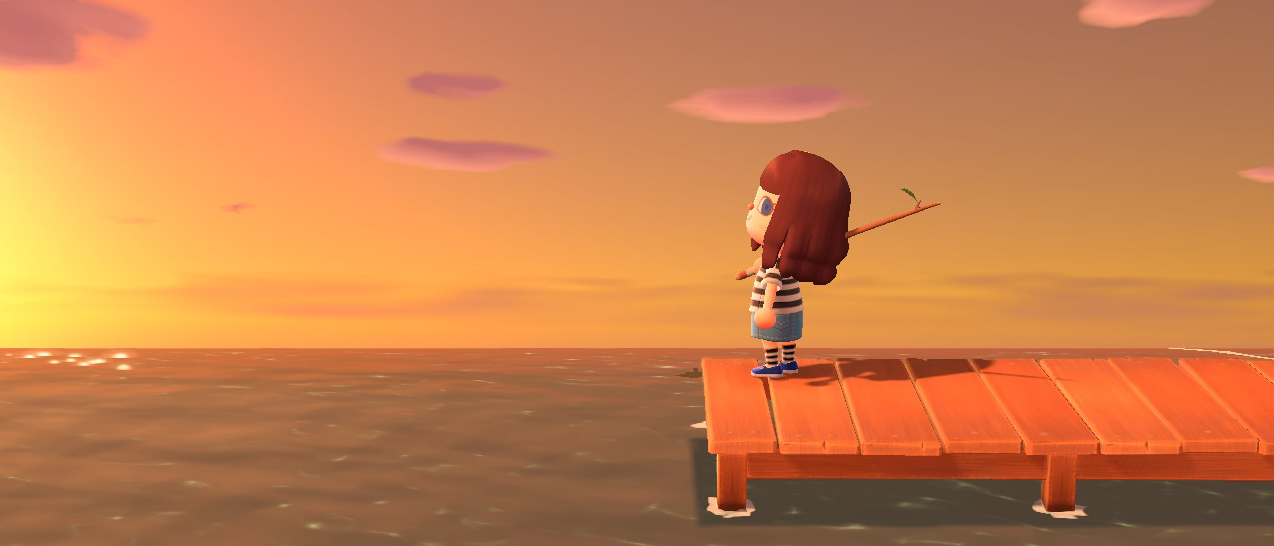TechRadar Verdict
Animal Crossing: New Horizons is the first new entry in the mainline Animal Crossing series for almost eight years and the first entry to be playable on the Nintendo Switch. As such, it’s familiar and fresh, deftly combining the old enjoyable parts of the series with some much-needed improvements and far greater depth than we’ve seen before.
Pros
- +
Crafting is an excellent (and simple) addition
- +
Best-looking and sounding Animal Crossing title to date
- +
More player control than ever before
Cons
- -
One island per Switch is likely to disappoint some
- -
Without cloud saves, more clarity around data recovery is needed
Why you can trust TechRadar
Platform: Nintendo Switch
Time played: 25 hours
In a world that can feel a bit overwhelming, sometimes it’s nice to just take it slow, you know? “But how do I take it slow?” We hear you ask—nay, beg. “How do I take it slow when every moment of my day is spent hustling, self-flagellating and stressing to the backing track of a never-ending news cycle of doom and destruction?”
Well, we’re not medical professionals but we’d like to prescribe a couple of sessions of Animal Crossing: New Horizons. It won’t solve your problems but, having spent just over a week with the game, we think it’ll pack them into a tiny suitcase in the back of your mind and let you take a mental holiday in your very own virtual paradise.
Different to previous Animal Crossing games, New Horizons whisks you off to a deserted island through an exclusive Nook Inc package. A deserted island is a nice choice of setting for the series for a few reasons. For one thing, it means you’re there from the very start as one of the first residents, establishing a sense of ownership and a deeper bond with your new home. You're the Swiss Family Robinson of this sand heap and it's through your graft that it'll grow.
Slow and steady
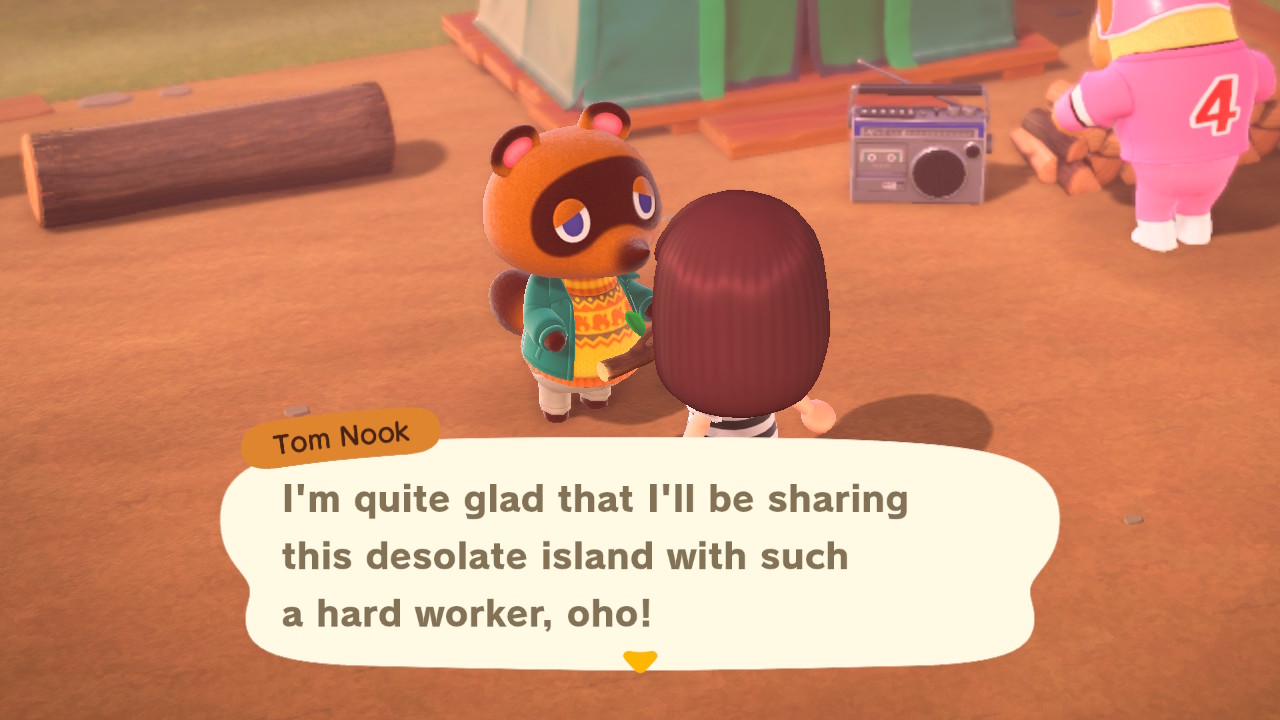
And it does take graft. Early on, you’re designated the Resident Representative of the island by Tom Nook, making you responsible for habitability and attractiveness, recruiting new islanders and helping to grow the economy by drawing in shops.
This does mean your first few hours spent in the game can feel somewhat underwhelming as you can't access every area of your island straight away and it’s a little sparse, both socially and in its infrastructure. Within a mere couple of days of play, however, we were scouring every inch of land, greeting new neighbors, marvelling at the newly constructed museum and wallpapering our very own brick home so the initial gating doesn't go on long enough to feel constrictive.
The Spartan beginnings and steady unfurling of features are essential for setting the pace of the game, which is such a big part of its charm. In Animal Crossing, things happen over days and weeks rather than minutes or hours. It's easy to go into a new Animal Crossing game and grind yourself into dust to earn money and get things looking exactly the way you want them (we were guilty of that on our own island at first). But New Horizons effectively encourages you to take things slow and savour each success as it comes.
More freedom than ever
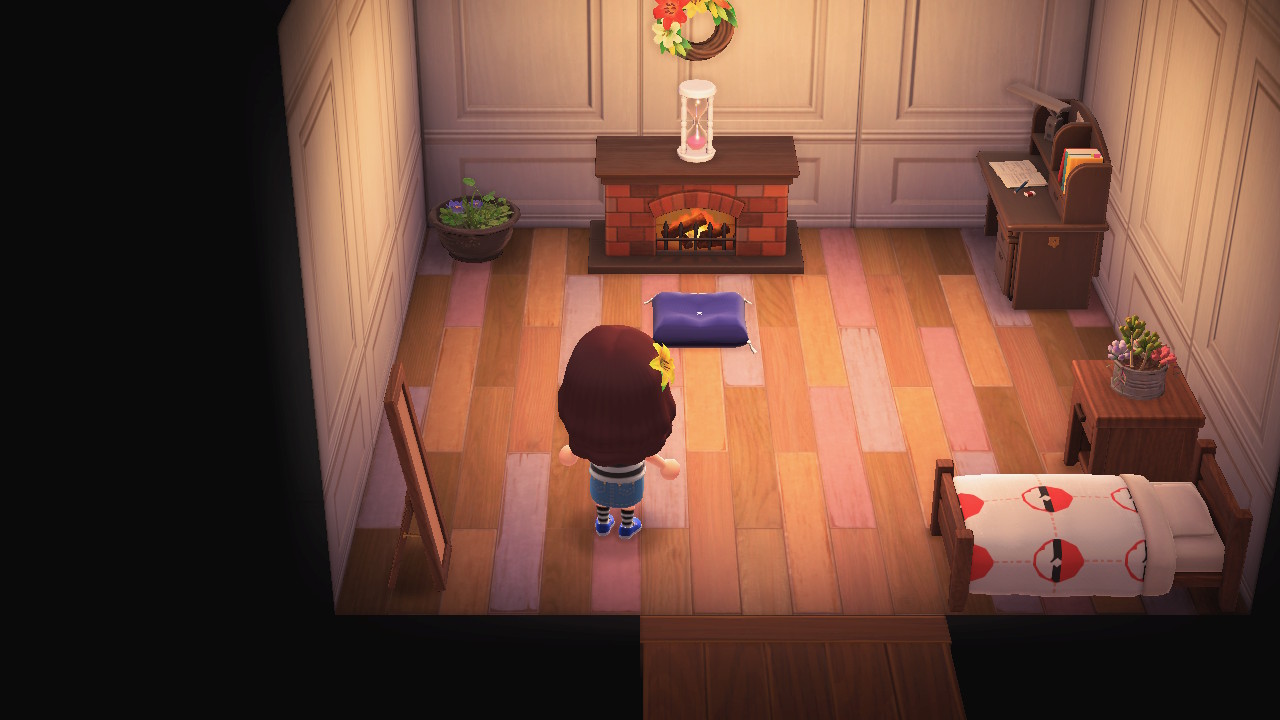
Another great thing about the desert island setting is that you’ve got a real blank canvas. In New Horizons you’re given more control than ever before over what your surroundings will look like.
You get to choose the layout of the land from four maps as well as the location of your home. But you also get to choose the locations of the homes of your neighbors, the shops and the museum, giving you complete control over the landscape.
At a later point, you can even build bridges and alter the land with slopes, paths and more. The means of doing things like laying a path or building a fence is no fast click-and-drag affair, it’s a deliberate and slow process but it’s all part of the thoughtful Animal Crossing experience. Don’t get us wrong, the peace was shattered by furious swearing when we incorrectly positioned a fence and had to pick it up and try again multiple times but these moments of frustration were few after some practice.
As in previous Animal Crossing games, Bells are king and doing things like building bridges and slopes, in fact even moving already established buildings, can be costly in New Horizons. And, like in New Leaf, you can only build one thing at a time until you've paid off the sometimes hundreds of thousands of Bells required, so don't have any expectations of achieving big changes too quickly. Once again, this is just part of Animal Crossing’s long-term view and the sense of achievement that comes from finally reaching your goal. It is, though, admittedly hard not to feel initially beleaguered by a 198,000 Bell mortgage and a 228,000 Bell bill for a bridge.
Fortunately, changing the landscape of your island isn't limited to time and Bell-consuming construction projects: now you can easily place furniture outside wherever and whenever you like. Want to place a rug on the beach so you can warm yourself by your campfire? Go for it. Like the idea of an outdoor gym area so you can pretend to be your favorite Love Island hunk? That’s fine too. Being able to quickly and easily decorate outside the confines of your home is a game changer for Animal Crossing, effectively removing the early-game frustration of having limited indoor space and adding way more opportunities for creativity.
Looking better than ever
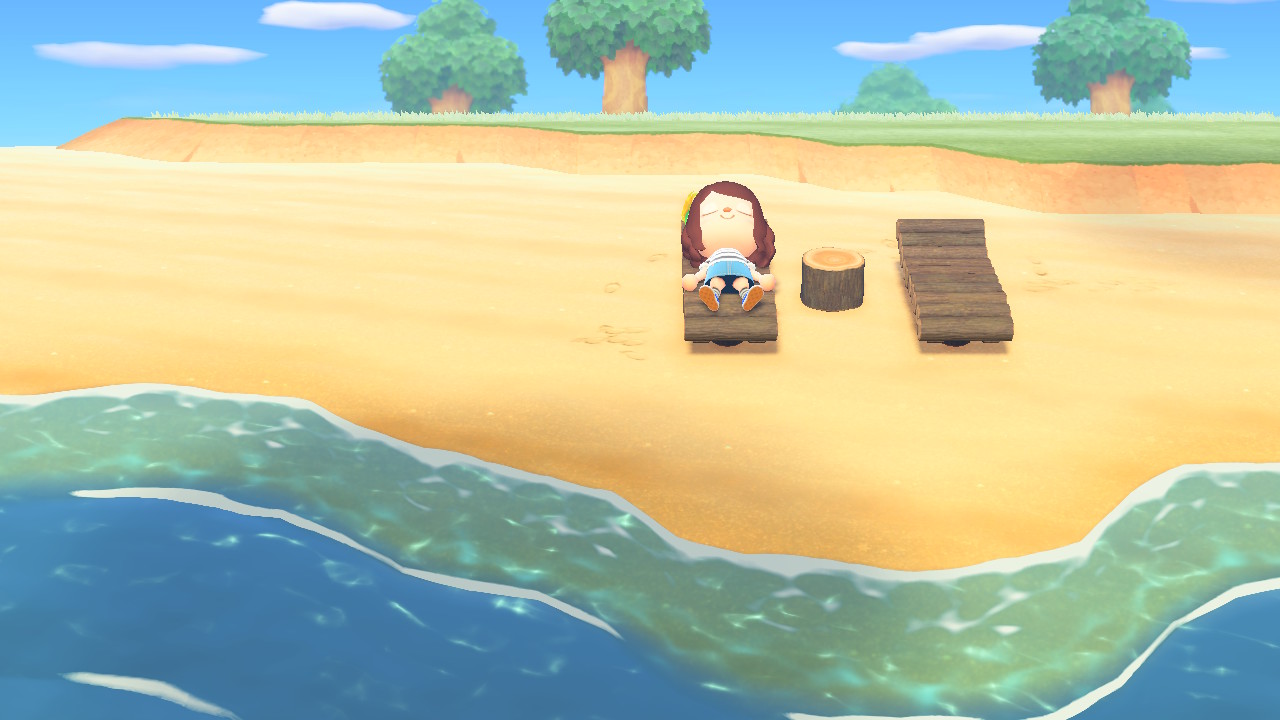
Decorating inside is also a more satisfying experience than it’s ever been thanks to a new streamlined mode which can be activated in your home. It gives you freedom to rotate and move things around without your avatar getting involved, making the whole thing faster and easier.
Generally, if you’re the kind of person who has minimal interest in interior decoration, in a game like Animal Crossing you will have a penchant for perfecting your appearance. New Horizons has taken that aspect of play to new levels too. Look back and laugh at the days when you had to answer questions to generate a look for yourself like some kind of half-arsed sorting hat quiz. Now, from the very beginning, you have some control over what your character will look like with a good range of options.
As you get further into the game, you’ll be able to approach a mirror or vanity and change up your look as you please which only becomes more enjoyable as you unlock more styles.
It’s not surprising given it’s on Nintendo’s most up-to-date console but this is truly the best-looking Animal Crossing game there’s been. The textures and details, the lighting, the animations—everything is sharp, smooth, colorful and a big improvement on previous releases. Seriously, open up New Leaf to check and you’ll probably receive the same shock as us.
Then there’s the sound design; this is absolutely a game to play with headphones just to immerse yourself in the atmospheric music and the sound effects. We ran repeatedly back and forth from the beach to the pier just because the change in our footsteps was so satisfying to listen to. It’s practically an ASMR simulator.
Clocking up the (Nook) miles
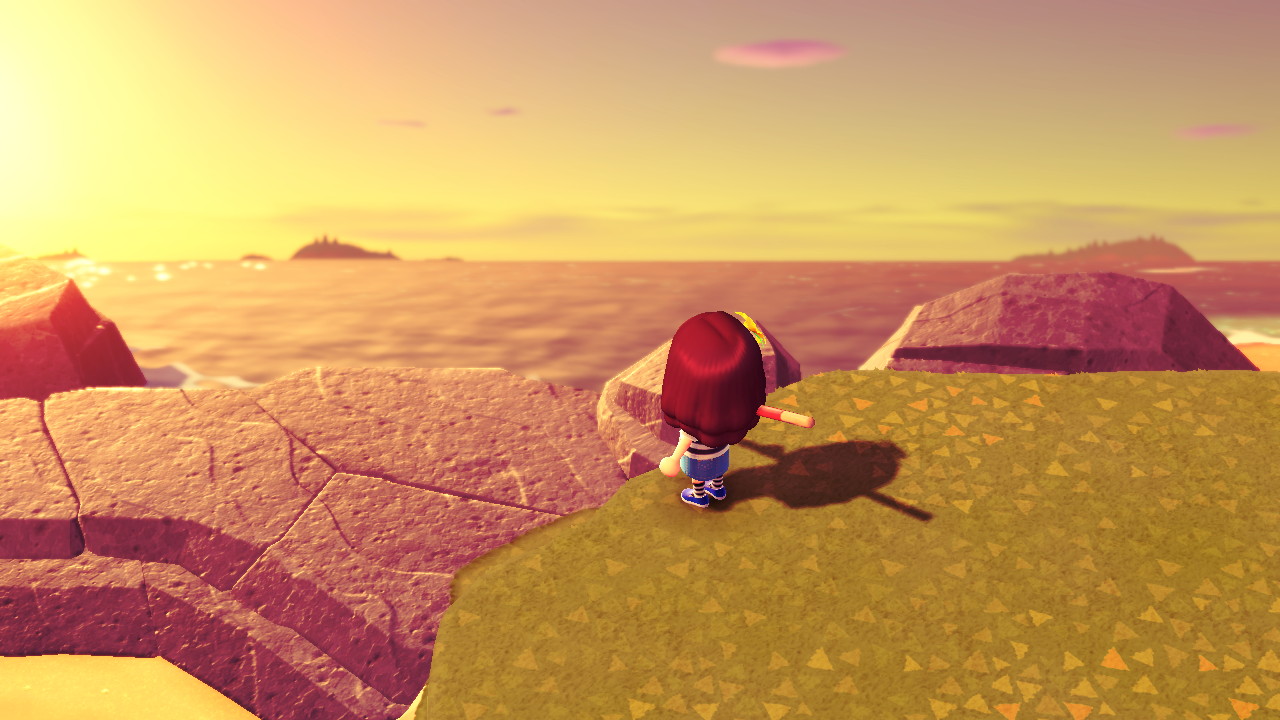
New Horizons vastly improves on aspects of the series that are familiar to us but it also introduces entirely new things to dig into. Like a new currency.
As mentioned, Bells are still the primary currency as you need them for pretty much everything.
But there are now also Nook Miles. This new currency is earned simply by playing the game and completing daily and more long-term objectives, kind of like an Achievements system. It adds a nice bit of guidance if you're unsure of what to do with yourself. Completing objectives like planting flowers, catching fish and checking into the game each day will earn you Nook Miles. Heck, sometimes even spending Nook Miles can earn you Nook Miles.
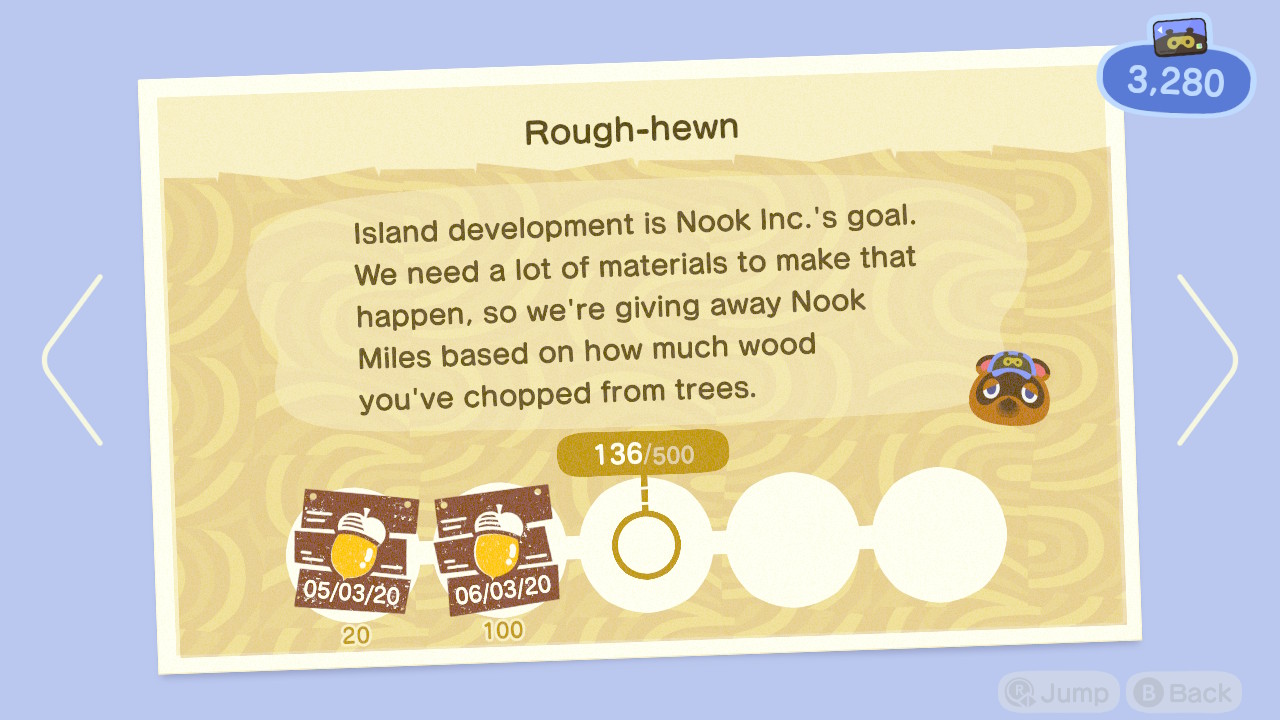
Having two currencies in the game, one of which rewards you simply for being active, not only adds a bit of guidance if you’re not sure what to do with yourself, it creates more balance with fewer instances of hitting a financial brick wall. There’s a pleasant sense that the decorative and creative fun doesn't have to stop just because you're using Bells to pay off a loan or trying to raise funds for a bridge.
Nook Miles are particularly worth collecting because you can buy some great stuff with them that you can’t buy with Bells like more inventory space, some fantastic outdoor decorations and, at a later point, you can trade Miles for Bells if you're in need of a real cash injection. Nook Miles can also get you plane tickets for visits to other islands.
These treks to other islands are another nice feature. They offer a change of scene (though it’s not that much of a visual change, really, since most of the islands look very similar) and present opportunities for recruiting new residents to your own island as well as gathering more resources for crafting or selling.
This is particularly useful if you’ve stripped your own island for the day and you really want to keep crafting—on one occasion we were overly excited by the fact that eating fruit in the game now makes you extra strong and destroyed every rock on our island, before realising we needed to mine some resources from them. Like Nook Miles, this just allows gameplay to flow continuously.
Craft and graft
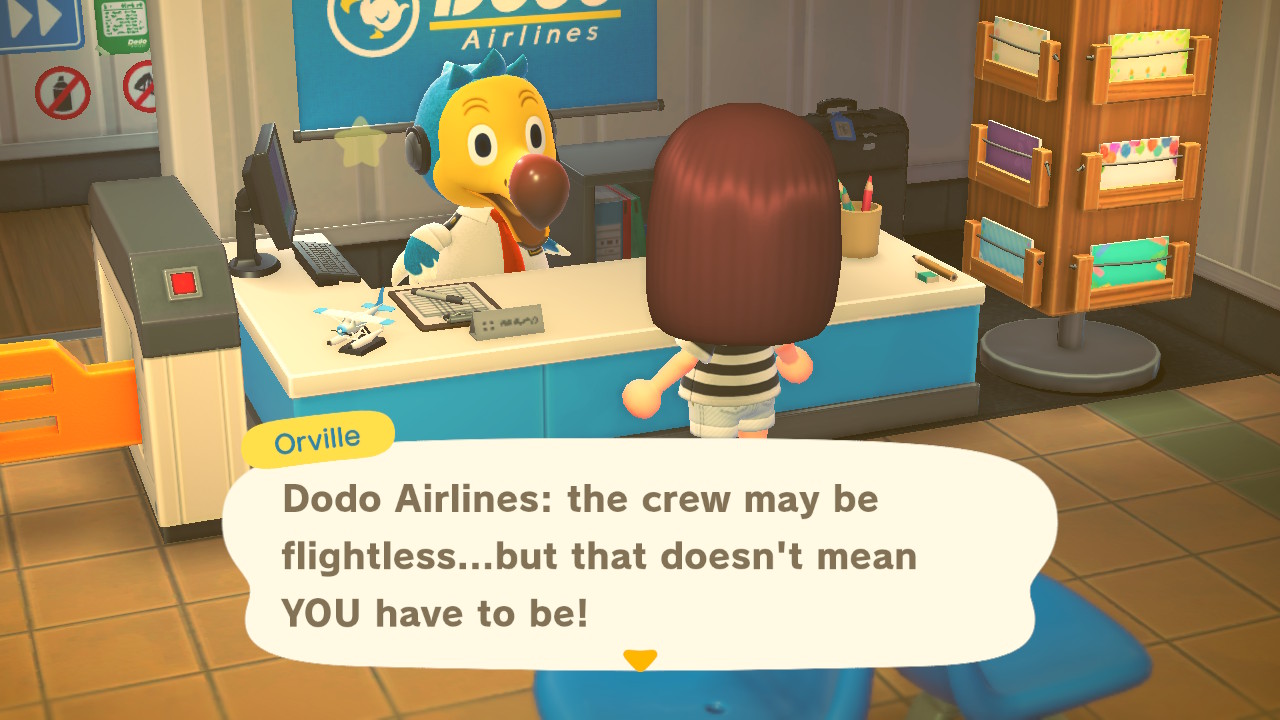
Another new aspect is crafting and perishable tools. We’ll be honest, when we first heard crafting was coming to Animal Crossing we sighed. Sometimes when they’re brought into sprawling RPGs in an attempt to balance breadth with some kind of depth, crafting systems can feel forced and finicky, ready to bog you down in unnecessary item gathering and management.
In Animal Crossing, though, crafting just works. It's reminiscent of Minecraft and not prohibitively complicated. Crafting is a simple matter of following ‘DIY Recipes’ from an app on your new Nook phone, whereby you gather the items you need from around the island, take them to a crafting table, select your desired creation and voila! You have something new hewn by your own increasingly Daniel Boone-like hands. DIY Recipes can be bought, found, gifted by other residents and even dreamed up by you when you come across something highly up-cyclable.
When we fished a tin can out of the sea, for example, we weren’t disappointed because suddenly our character had come up with a plan to collect a bunch of weeds and turn this mix of ugly uselessness into a pretty succulent. Other craftable items include furniture and tools for getting things done around the island. When you start gathering more recipes you’ll find that their complexity can increase but they tend to be worth the effort.
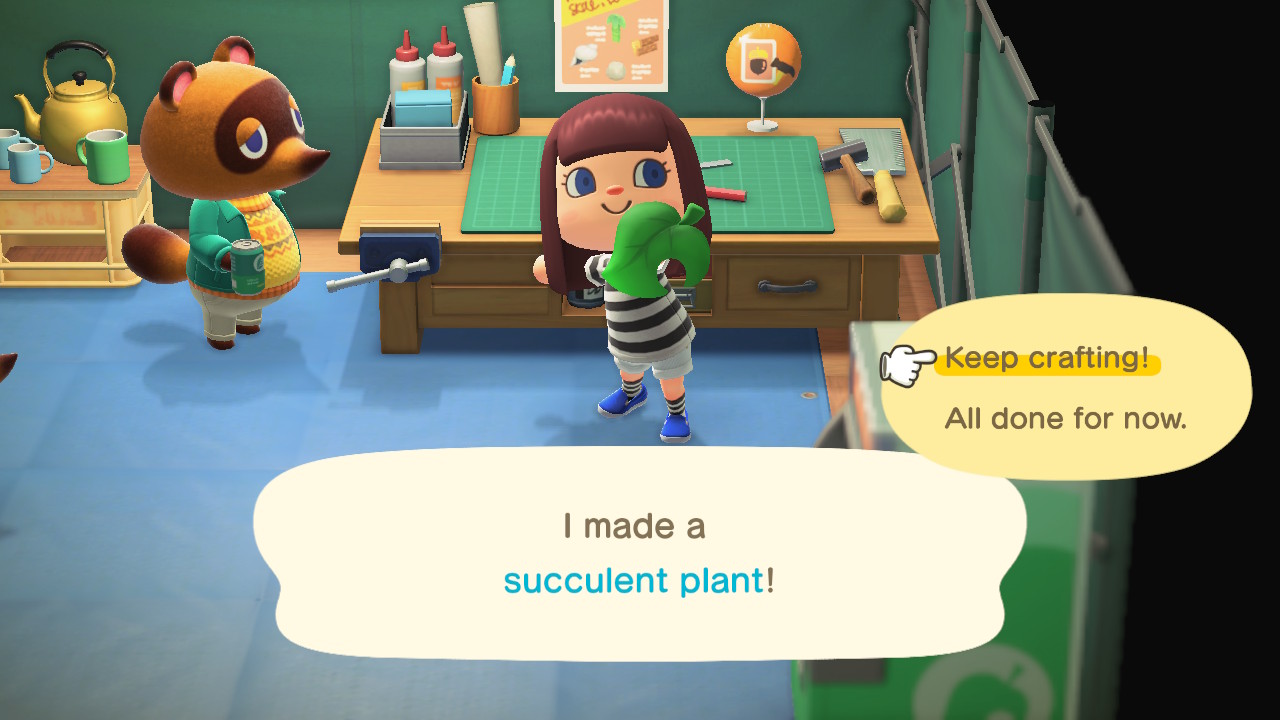
As well as giving you even more to do, crafting adds more depth to the world's ecosystem. Suddenly a tree isn't just a tree, it's three different kinds of wood, each of which can be used to create something new. Thanks to this new mechanic you feel like more than a mindless Bell-scraper who’s saving simply to buy more—you’re a self-sufficient islander.
There are still plenty of items to buy, of course—basic tools can be purchased rather than made and items of furniture and general decor can be bought from stores but the game manages to strike a nice balance between need and want when it comes to crafting from what we’ve played thus far. It’s nice to be able to set a goal and create something but having surprising new items of furniture appear each day in the shop is a pleasure that’s still present.
Social animals
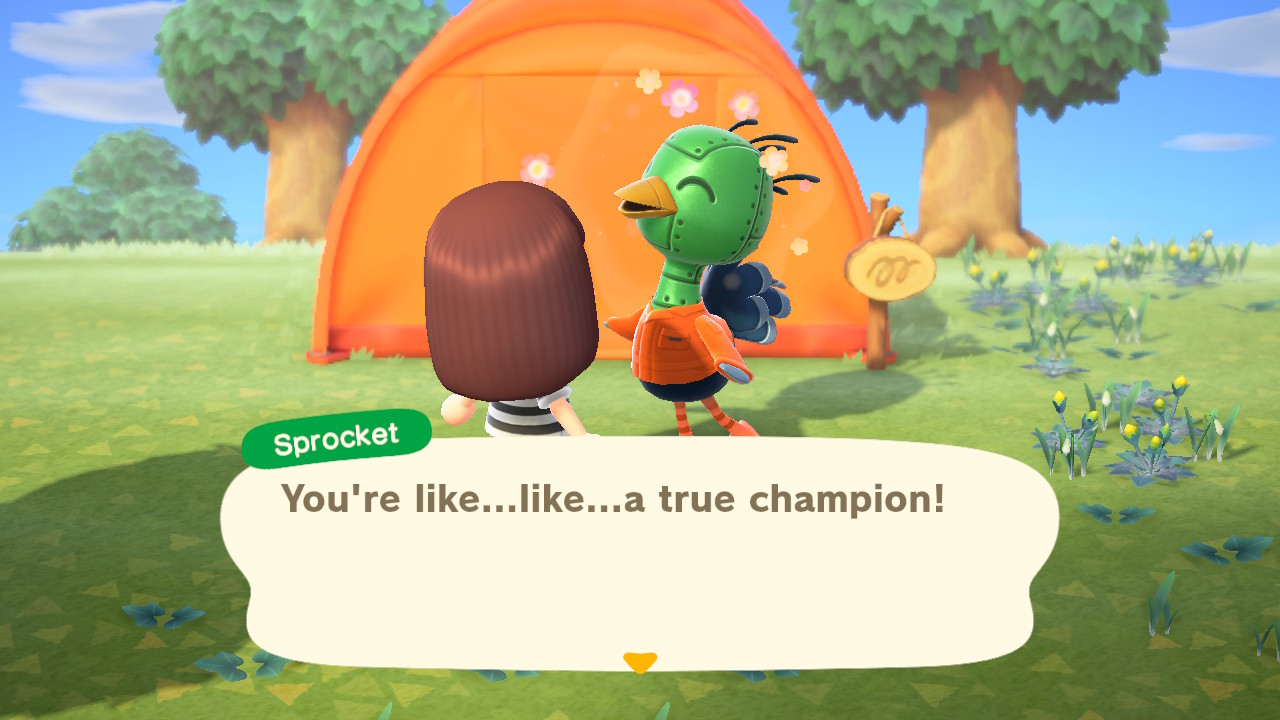
Of course, Animal Crossing isn’t just about customizing and building. Some of its most memorable moments come from just living. All of the familiar Animal Crossing pursuits are here like collecting fossils for the museum, catching bugs, fishing, creating patterns and designs or simply doing the rounds and checking in with your neighbors.
Friendship is a core pillar of the series and building relationships with the animals that come to your island is genuinely enjoyable because their animations are better than ever and the writing feels sharper and funnier too.
You don't have to rely on your AI neighbors for company in New Horizons, though. It's possible to visit the islands of other friends and have them visit you through Nintendo’s online service. You can also play couch co-op with your family and friends with up to four people able to tumble around on a single console’s island at once.
We haven’t had the chance to test this yet but it could some of the sting out of the fact that only one island is allowed per console but it's not a complete antidote. Your island is supposed to be your haven and those forced to share their Switch with family members (especially younger family members) might be disappointed by the fact that they're going to have to compromise on their vision of paradise.
All the small things
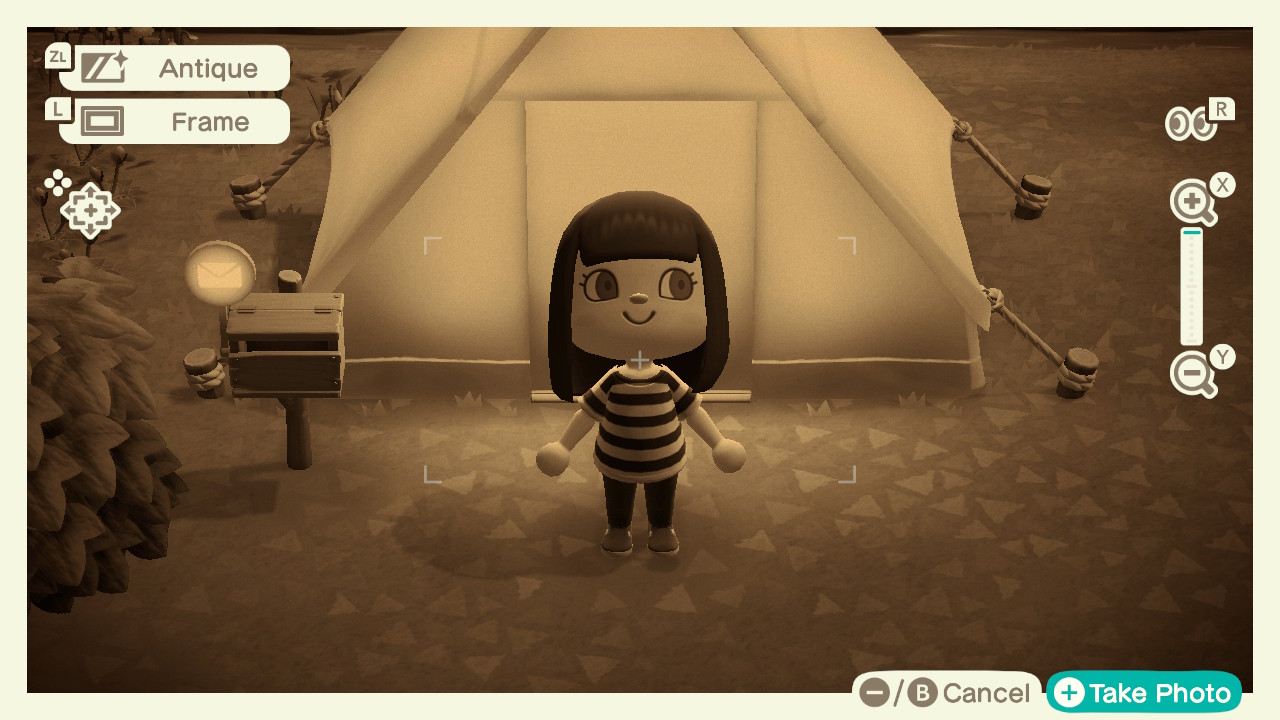
Another issue with New Horizons is the lack of support for cloud save data which is disappointing when it’s made life easier in so many other Switch titles. While Nintendo has said that it’ll be setting up a service for the recovery of data in the event of a lost, stolen or broken Switch at the moment we don’t know how often we’ll be able to access this service or how easy it’ll be.
As irksome as these things can be, however, they do feel very minor compared to what the game does right.
There are several notable quality of life improvements in New Horizons which make it far more accommodating to its players than previous games. Autosaving; inventory expansion and item stacking; the ability to assess multiple fossils and donate multiple items to the museum at once; the quick access tool wheel—all of these things make playing the game easier and more enjoyable. The camera mode, especially, is extremely accomplished with filters, zoom, and perspective shifting so you can capture your hard work looking its best.
Verdict
Like most life sims, Animal Crossing forms a highly symbiotic relationship with its players—basically you’ll get out of it what you put into it. New Horizons is in part so enjoyable because it feels like it’s offering and giving back even more than previous games in the series. If there's one thing that you need to know about Animal Crossing: New Horizons it's that it really wants you to have a nice time, whatever your idea of a nice time actually is.
Animal Crossing has always had a very distinct charm that other games can mimic well but never quite surpass; that charm has been retained, even enhanced, in New Horizons. All of the elements of the series that have appealed to fans in the past are here but with greater depth and more refinement—it's a genuine pole-vault forward that will appeal to veteran residents and newcomers alike.
Animal Crossing: New Horizons will release for Nintendo Switch on March 20.
- New games 2020: the biggest games coming to console and PC
Emma Boyle is TechRadar’s ex-Gaming Editor, and is now a content developer and freelance journalist. She has written for magazines and websites including T3, Stuff and The Independent. Emma currently works as a Content Developer in Edinburgh.
